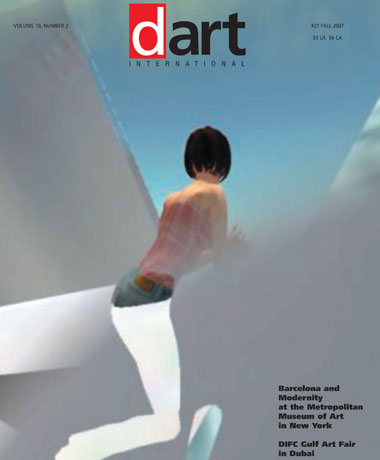Courage to Change
Sharjah Biennial 8
United Arab Emirates
Photos of & text by Janet Bellotto
Mohammed Kazem, Eva Scharrer and Jonathan Watkins shared the stage of curating the 8th Sharjah Biennial Still Life: Art, Ecology and the Politics of Change.
 The focus of this year’s biennial was on the environment in its various forms. In a country whose main economic viability stems from fossil fuel, it was a timely subject to breach, as criticism on social and environmental concerns grows in the newsworld. Although the main exhibition was housed in the Sharjah Museum, the encounter at the Expo Center had a few more riveting works, as did installations located in and around the Heritage area – if you could find them. Sharjah, being the third largest Emirate in the United Arab Emirates, and dedicated to the growth of art and culture, is also an easy place in which to get lost, and the roads, with their lack of road signs, always seem to lead to the same place. The focus of this year’s biennial was on the environment in its various forms. In a country whose main economic viability stems from fossil fuel, it was a timely subject to breach, as criticism on social and environmental concerns grows in the newsworld. Although the main exhibition was housed in the Sharjah Museum, the encounter at the Expo Center had a few more riveting works, as did installations located in and around the Heritage area – if you could find them. Sharjah, being the third largest Emirate in the United Arab Emirates, and dedicated to the growth of art and culture, is also an easy place in which to get lost, and the roads, with their lack of road signs, always seem to lead to the same place.
With over 50 commissioned works at the biennial, it wasn’t surprising to encounter artworks by Mona Hatoum and Cornelia Parker, but turning the corner to experience a life-size kaleidoscope by Lara Baladi or participating in an exchange with paper fruit by SOI Project was refreshing. Water, already a subject of contention in parts of the world, was luminously handled by the Swiss duo Gerda Steiner and Jörge Lenslinger with The Desalination Plant Waste Garden. They are known for their crystal-growing installations and suspended gardens using collected materials, such as the Giardino Calante at the Church of San Staë during the 50th Venice Biennial. Within a walled sector of the Heritage Area Steiner/ Lenslinger entwined dried-up twigs and branches, colorful plastic flowers and hanging plant pots watered with a local bottle brand. The scintillating plants were encrusted by salt crystals that were formed from the dripping brine taken from the Sharjah desalination plant. Located in a space that was hot and dusty, and with beads of sweat accumulating, the need for visitors to quench their thirst was inevitable. In a part of the world with few green areas, the desire to live surrounded by it is greater, as is clean water for basic survival.
I walked out of the Sharjah Museum devoid of the of hope salvaging what we have not yet destroyed of our environment. Lutz & Guggisberg’s burnt wood installation Population was scattered across the area opposite the museum, and further drove home the facts of destructive consumption. Their video Wash the World was somewhat reminiscent of a Dr. Who episode and was a critique on the future of one of the world’s most important resources.
With Autoxylopyrocycloboro, UK artist Simon Starling presented a different kind of loss. Created in the waters of Loch Long in Scotland, this short slide presentation documented the fueling of a steamboat by feeding the boiler with parts of the steamboat itself to oblivion. Predictably, the boat never completed its journey. My moment of empathy and absurdity was watching Raeda Saadeh’s video Vacuum. In it, someone has taken on the menial task of vacuuming the side of a dirt and rubble mountain ad infinitum.
Yet, an undeniably compelling work sprung from the smallest of gestures. A tiny sign located at the entrance of the biennial read "Less Oil More Courage." Rikrit Tirvanija’s proposal to put signs along the Dubai-Sharjah road – had its own complications of red-tape, but it was a poignant idea that will live on beyond the life of the biennial. It is not enough to point out the fact that the world is dominated by oil. "Less Oil More Courage" dares us to think about our own courage, ultimately impelling us to the road to change.
|